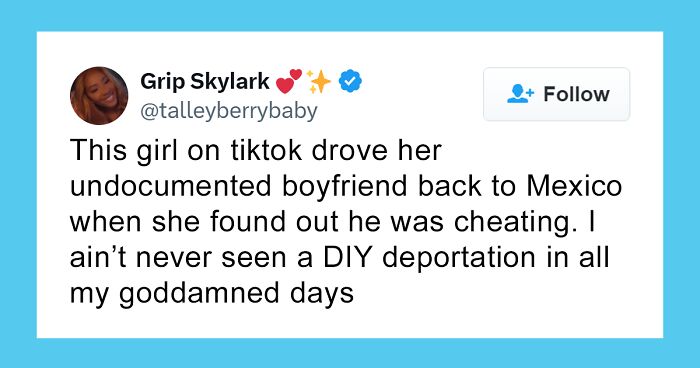
Understanding Dog Warts: Causes, Treatment & Veterinary Care
If you’re a dog owner, you may have noticed your furry friend developing small, raised bumps on their skin, eyelid or inside their mouth. These may be warts, a common condition among dogs of all ages and breeds. While dog warts are generally harmless, it’s essential to understand their causes, available treatments, and the importance of seeking veterinary care.
- Dog warts are typically caused by the canine papillomavirus.
- Common breeds affected include schnauzers, spaniels, and pugs.
- Symptoms include small, rough, cauliflower-like growths.
- Treatments include cryotherapy, surgery, and medication.
- Prevent spread by avoiding contact and maintaining hygiene.
In this article, we’ll provide a comprehensive understanding of dog warts and offer insights on managing your dog’s health effectively. We’ll start by exploring the causes of warts on dogs, discussing their symptoms and appearance, and highlighting various treatment options available. Additionally, we’ll focus on preventive measures to minimize the occurrence and spread of dog warts, keeping your furry friend healthy and happy.
The information provided herein is for informational purposes only. Please refer to our disclaimer for more details..
What Are Dog Warts and What Causes Them?
Image credit: Pixabay
If you notice small, raised growths on your dog’s skin or inside their mouth, it’s possible that they have dog warts, also known as canine viral papilloma. These warts are typically caused by a virus known as the canine papillomavirus.
Dog warts can appear as single or multiple growths that resemble warts on humans. They often develop around the mouth, face, lips, and tongue but can also occur on other parts of the body. Canine papillomavirus is highly contagious and can be passed from one dog to another through direct contact or exposure to infected surfaces.
Canine papillomavirus affects mainly young dogs, as they have less developed immune systems, but it can also occur in older dogs. Common breeds that are predisposed to develop warts and oral papillomas include: miniature schnauzers, cocker spaniels and pugs.
If left untreated, dog warts can grow and spread, potentially leading to discomfort and even infection. It’s important to seek veterinary care if you suspect your dog may have warts or any other skin condition.
Symptoms, Diagnosis, and Treatment for Dog Warts
Image credit: Mikhail Nilov
Recognizing the symptoms of dog warts is crucial in seeking prompt veterinary care. Warts appear as small, fleshy growths on the skin, usually with a rough, cauliflower-like texture. Common locations include the face, lips, and mouth, although they can appear anywhere on the body. Inside the mouth, warts can cause discomfort, excessive drooling, and difficulty eating or drinking.
Diagnosing warts involves a physical examination and your Veterinarian may also perform a biopsy to confirm the presence of the viral papilloma. Seeking proper veterinary treatment is essential, as untreated warts can become infected, inflamed, and painful.
There are several treatment options available for managing dog warts, including surgical removal, cryotherapy, and topical medications. In some cases, warts may regress on their own without intervention. It is important to note that viral warts can be contagious, and isolation of infected dogs may be necessary to prevent further spread.
Why is My Dog Suddenly Getting Warts?
Warts are common in dogs and any dog of any age group or breed may get warts. They appear as small raised bumps or cauliflower-like growths with a peduncle, dog of any age may get warts. However, young puppies, old dogs and immunocompromised patients are most commonly affected.
Warts develop due to a virus called canine papilloma virus that can affect other dogs. Papilloma virus enters the dog’s skin through a break in dermis and proliferate quickly if the immune system is in a compromised state.
Should I worry If my Dog has Warts?
Dog warts usually are not a big cause for concern, if they are in small numbers and are not spreading. However, if there are complications like warts that gets popped or infected, or are in a location like eyelids and causing irritation and infection, you should contact your Veterinarian and get it resolved.
What kills Canine Papilloma Virus?
The treatment of papilloma in dogs involves a combination of therapies including cryotherapy, surgical excision of warts and use of topical and oral antiviral medication. Some medicines like Interferon and topical Imiquimod are used for treating warts in dogs.
This medicine works by activating Interferon alpha and T-cell mediated immunity in the dog and helps the body to fight the virus. Azithromycin has also been used in research trials and has given promising results in treating canine warts. You can learn more about it in this study.
How to Prevent the Spread of Canine Warts on Dogs?
As dog warts are contagious, preventive measures are crucial to minimize their occurrence and spread. This means avoiding direct contact with infected dogs or contaminated environments wherever possible. It’s especially important to keep your dog away from dog parks or areas where dogs congregate in large groups.
If your dog has already been in contact with an infected dog, it’s important to watch for signs of the condition’s onset. Warts are generally slow to develop, so catching them early means a better chance of effective treatment with minimal spread.
It’s also essential to maintain good hygiene practices. Regularly clean and disinfect your dog’s living spaces and common areas, such as their bed, toys and food bowls. Your dog’s immune system is key to fighting off any viral infections, so ensuring they receive a balanced diet and adequate exercise is also important.
In summary, preventing dog warts involves keeping your dog away from infected dogs and maintaining a clean, hygienic environment. Although warts are relatively harmless, they can spread easily and become irritating for your dog. By taking preventive measures to reduce the risk of transmission, you can help keep your dog healthy and happy.
Conclusion
In conclusion, understanding dog warts is crucial for ensuring your furry friend’s optimal health. By familiarizing yourself with the causes, symptoms, and available treatment options, you can take proactive measures to manage this condition effectively. Whether you notice warts on your dog’s skin or inside their mouth, it’s important to seek veterinary care promptly to diagnose and treat the condition.
Moreover, by adopting preventive measures such as avoiding contact with infected dogs in dog parks and keeping your dog’s immune system strong, you can minimize the chances of warts occurring. In sum, through awareness and responsible pet ownership, you can provide your dog with the best possible care and keep them healthy and happy for years to come.
FAQ
How do dogs get warts?
Dogs can contract warts through direct contact with another dog who has the virus. The virus can enter the body through a break in the skin, typically during activities such as playing or interacting at a dog park.
Are dog warts contagious to other dogs or humans?
Yes, dog warts are contagious among dogs. It is important to keep your dog away from other dogs if they have warts to prevent the spread of the virus. However, dog warts cannot be transmitted to humans or other animals.
What do dog warts look like?
Dog warts typically resemble small, raised bumps that can appear anywhere on the dog’s skin or inside their mouth. They may have a rough, cauliflower-like texture.
Do dog warts cause discomfort?
In most cases, dog warts do not cause any discomfort or pain. However, if the warts become infected or located in sensitive areas, such as around the eyes or mouth, they can cause some mild irritation.
Do dog warts require treatment?
In many cases, dog warts will regress on their own without any treatment. However, if the warts persist, are causing discomfort, or are located in problematic areas, veterinary treatment may be necessary to remove or treat the warts.
How can I prevent my dog from getting warts?
To prevent your dog from getting warts, it is important to minimize their contact with infected dogs or environments where the virus may be present. Avoid letting your dog interact with dogs who have visible warts or frequenting areas such as dog parks where contagious viruses can spread easily.
Are dog warts cancerous?
Dog warts are generally benign and not cancerous. However, if you notice any abnormal or concerning skin abnormalities on your dog, it is always best to consult with a veterinarian for proper diagnosis and treatment.
Can I remove my dog’s warts at home?
It is not recommended to try removing your dog’s warts at home. Improper removal methods can lead to infection or worsen the condition. It is best to consult with a veterinarian for appropriate and safe removal procedures.
290views
Share on Facebook
 Dark Mode
Dark Mode 

 No fees, cancel anytime
No fees, cancel anytime 
























![“AITA For Losing [It] And Screaming At GF To Get Out Of My House After What Her Stepbrother Did?”](https://www.boredpanda.com/blog/wp-content/uploads/2025/01/man-screams-gf-over-creepy-stepbrother-fb18-png__700.jpg)


-4
0